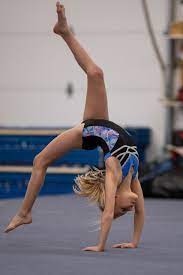Gymnastics for kids offers a powerful mix of physical, mental and emotional benefits—especially when introduced early. Starting gymnastics in the toddler or preschool years helps children develop coordination, confidence and core strength that form the foundation for a lifetime of movement.
Whether it’s cartwheels in the lounge room or balancing on a low beam, early engagement in gymnastics helps shape not only strong bodies but also resilient minds. Here’s how.
What skills does gymnastics develop in young children?
Gymnastics supports fundamental motor skill development in ways many other sports don’t. From as young as two or three years old, children learn to:
- Balance, jump, roll and climb safely
- Strengthen core muscles through body-weight activities
- Develop spatial awareness and coordination
- Improve flexibility, posture and alignment
These are foundational skills that translate directly into other sports and daily physical activity. In fact, studies have shown that early exposure to structured movement significantly boosts a child’s gross motor development, especially before the age of six (source).
How does gymnastics for kids support mental development?
The benefits of gymnastics aren’t just physical. Participating in gymnastics helps young children:
- Learn how to follow instructions and routines
- Build patience and focus through repetitive practice
- Manage emotions like frustration, nervousness and excitement
- Develop confidence by overcoming small physical challenges
These outcomes are closely tied to long-term success at school and in social situations. Gymnastics classes often involve repetition, waiting turns and mastering a sequence—all excellent ways to strengthen executive function in young minds.
Why is social interaction in gymnastics important?
Unlike solo sports, gymnastics sessions for young children typically occur in small group classes, encouraging:
- Peer-to-peer learning through observation
- Verbal communication and encouragement
- Empathy through shared wins and setbacks
This creates an environment that builds emotional intelligence alongside physical capability. Social Proof—one of Robert Cialdini’s core persuasion principles—also plays a key role: when children see peers succeeding, they are more likely to try new movements and believe they can do it too.
Is gymnastics safe for preschool-aged children?
Yes—when supervised by qualified coaches in a safe, padded environment, gymnastics for kids is not only safe but beneficial. Programs designed for young age groups prioritise:
- Soft, age-appropriate equipment
- Skill progression with spotting and support
- Warm-up and cooldown routines
- Small class sizes and close supervision
It’s worth noting that gymnastics helps children learn how to fall properly and safely, reducing injury risk not just in sport, but in everyday activities like bike riding or playground play.
How early is too early to start gymnastics?
There’s no hard rule, but most gymnastics centres offer “Kindergym” or “Mini Movers” classes starting from 18 months to 3 years. At this age, children attend with a parent or carer, building early movement confidence in a secure setting.
From around age 4, many kids transition to independent classes where they begin learning basic routines, positions and techniques. Starting young means they’re better prepared—physically and emotionally—for more advanced levels later on.
What are the long-term benefits of early gymnastics?
Parents who enrol their children early in gymnastics often find their kids:
- Stay active and healthy through childhood
- Transition more easily into team or individual sports
- Show improved classroom focus and learning skills
- Build positive self-esteem through goal setting and achievement
Because gymnastics requires discipline, practice and body control, it lays a powerful foundation for all future physical endeavours. Whether your child becomes a gymnast, swimmer or netballer, they carry these skills with them for life.
Can gymnastics improve school readiness?
Absolutely. Gymnastics involves listening to instructions, sequencing movements, and sticking to routines—skills closely aligned with classroom readiness. Physical activity has also been linked to improved memory and concentration in school-aged children.
Moreover, the confidence gained from mastering gymnastics challenges often transfers to other areas of life, from public speaking at school to participating in group activities. That quiet boost in self-belief can make all the difference in the early primary years.
Frequently Asked Questions
Is gymnastics suitable for shy or introverted kids?
Yes. Gymnastics can be a great outlet for shy kids because it offers individual challenges within a group setting. They can build confidence at their own pace without pressure to compete.
Does my child need to be naturally flexible or strong to start?
Not at all. Gymnastics for kids is about building strength and flexibility over time. Every child starts with a different ability level and progresses at their own pace.
How often should my child attend gymnastics classes?
One session per week is enough for beginners. As children grow and gain interest, they may increase to two or more sessions depending on their enthusiasm and goals.
Final thoughts: Is early gymnastics worth it?
The short answer? Yes. The benefits of starting gymnastics at an early age stretch far beyond somersaults and handstands. It’s a developmental powerhouse that shapes physical coordination, emotional resilience and social skills in equal measure.
For parents looking to support their child’s growth through early childhood sport programs, gymnastics offers an ideal blend of fun, fitness and foundational learning. You can explore more about structured offerings and age-based classes via this page on early childhood sport programs.

